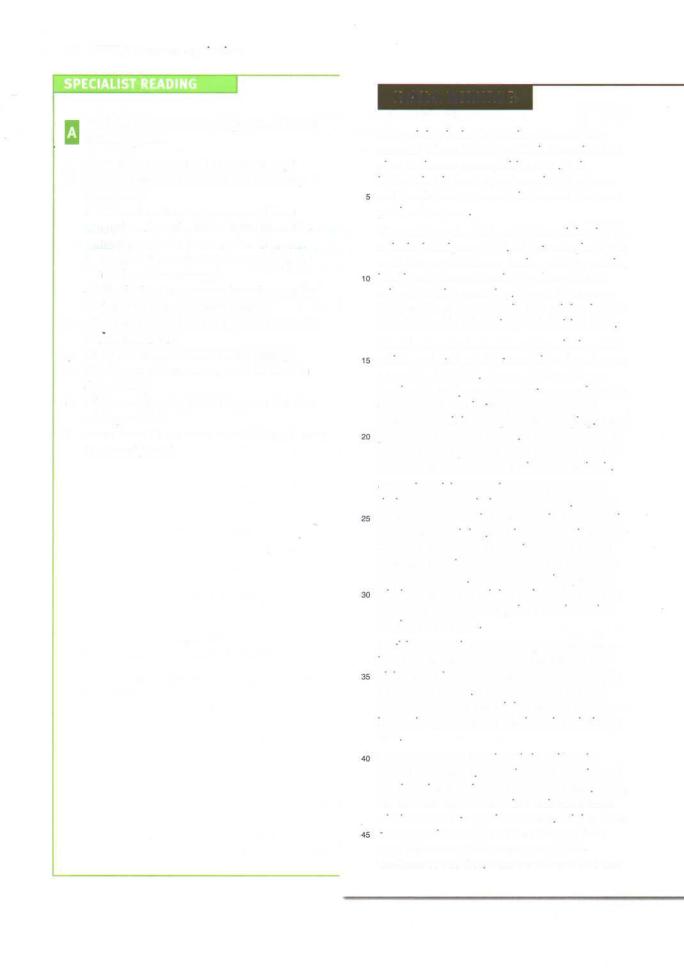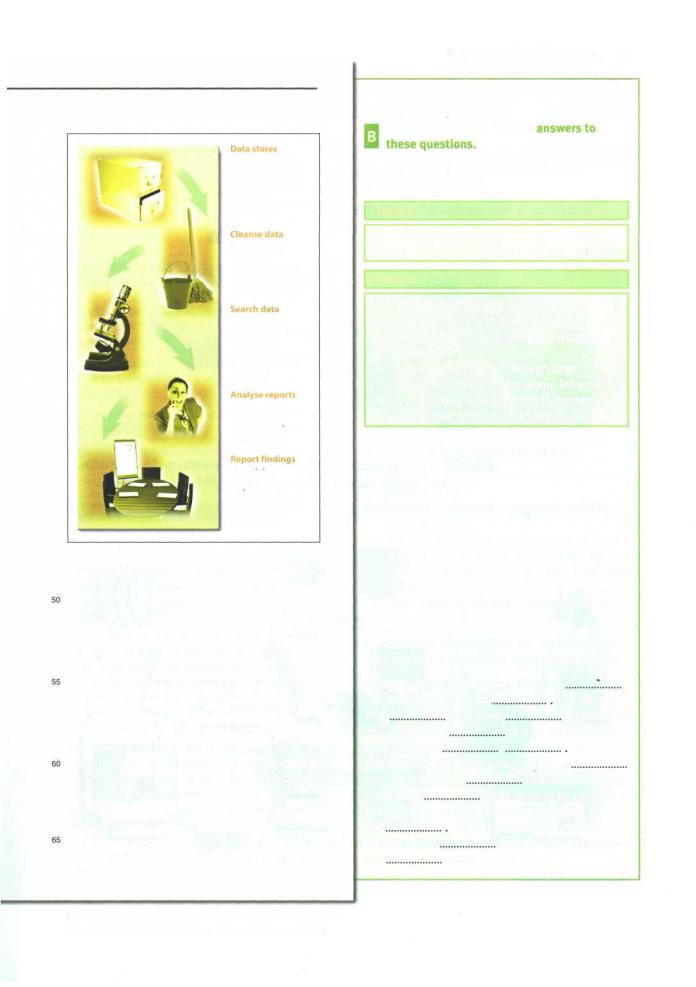
Oxford English for Information Technology / unit3
.pdf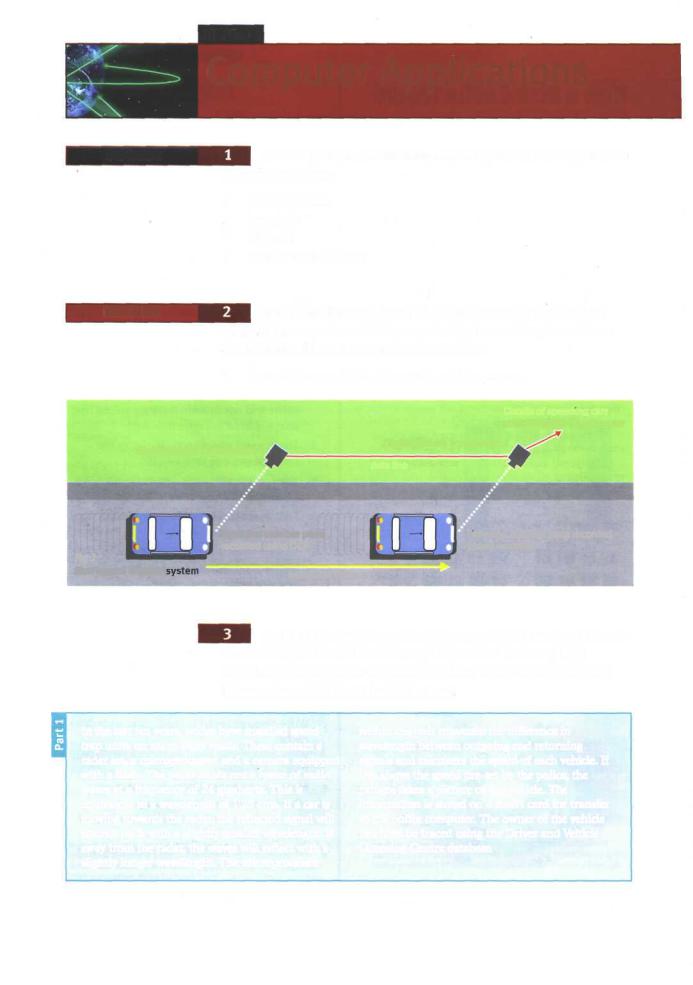
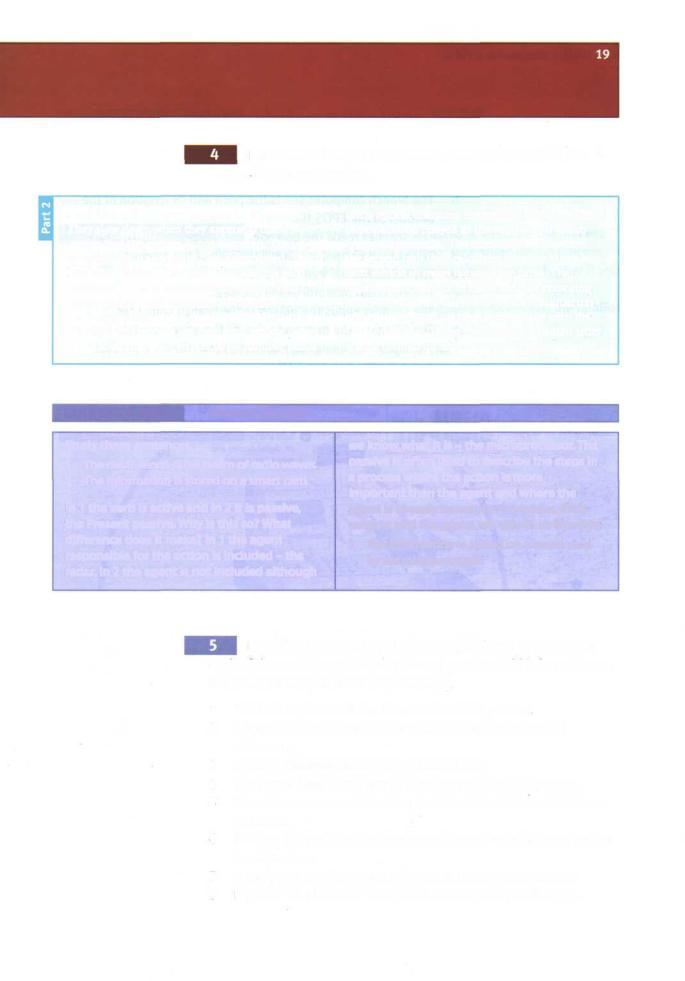
Part 2 describes the new system. Read it to complete the
stages in your explanation.
Some drivers have now got used to these traps. They slow down when they approach one to ensure that the camera is not triggered. They speed up again as soon as they have passed. This is known as 'surfing'. One way of outwitting such motorists is a new computerised system. This consists of two units equipped with digital cameras positioned at a measured distance apart. The first unit records the time each vehicle passes it and identifies each vehicle by its number plates
using optical character recognition software. This information is relayed to the second unit which repeats the exercise. The microprocessor within the second unit then calculates the time taken by each vehicle to travel between the units. The registration numbers of those vehicles exceeding the speed limit are relayed to police headquarters where a computer matches each vehicle with the DVLC database. Using mailmerge a standard letter is then printed off addressed to the vehicle owner.
LANGUAGE WORK |
Present passive |
Study these sentences.
1The radar sends out a beam of radio waves.
2The information is stored on a smart card.
In 1 the verb is active and in 2 it is passive, thePresentpassive.Whyisthisso?What difference does it make? In 1 the agent responsible for the action is included - the radar. In 2 the agent is not included although
we know what it is - the microprocessor.The passive is often used to describe the steps in a process where the action is more important than the agent and where the agent is already known to the reader. If we need to add the agent, we can do so like this:
3The information is stored on a smart card by the microprocessor.
Describe the operation of the new speed trap by converting each of these statements to the Present passive. Add information on the agent where you think it is necessary.
1The first unit records the time each vehicle passes.
2It identifies each vehicle by its number plates using OCR software.
3It relays the information to the second unit.
4The second unit also records the time each vehicle passes.
5The microprocessor calculates the time taken to travel between the units.
6It relays the registration numbers of speeding vehicles to police headquarters.
7A computer matches each vehicle with the DVLC database.
8It prints off a letter to the vehicle owners using mailmerge.
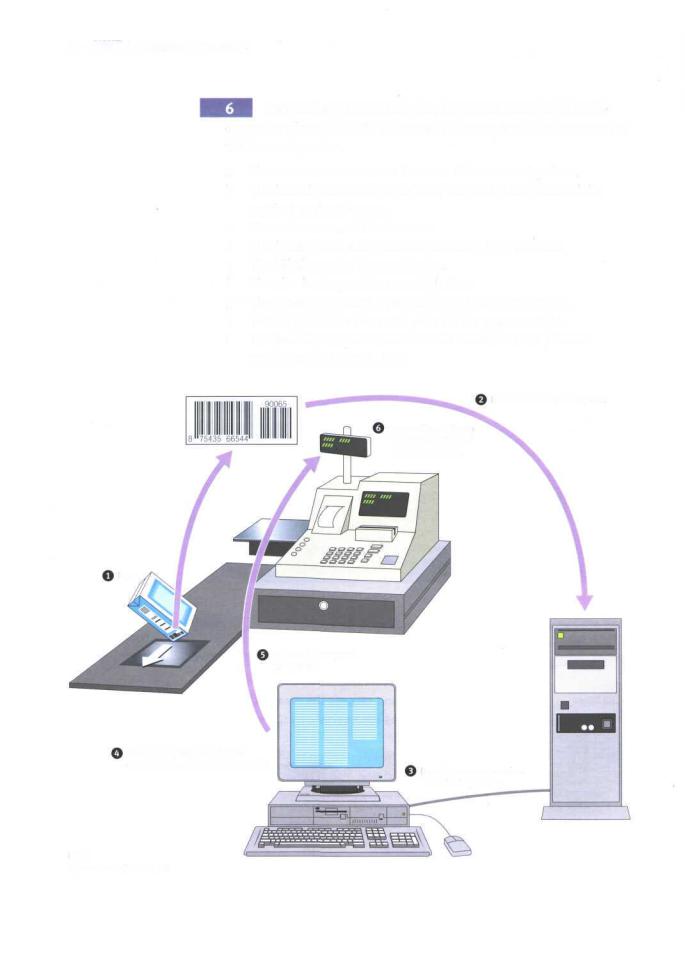
20 UNIT 3 Computer Applications
With the help of this diagram, sequence these steps in the operation of an EPOS till. Then write a description of its operation in the Present passive.
aThe scanner converts the barcode into electrical pulses.
bThe branch computer sends the price and description of the product to the EPOS till.
cThe scanner reads the barcode.
dThe branch computer records the sale of the product.
eThe till shows the item and price.
fThe checkout operator scans the item.
gThe scanner sends the pulses to the branch computer.
hThe till prints the item and price on the paper receipt.
iThe branch computer searches the stock file for a product matching the barcode EAN.
Bar code to branch computer.
Item and price shown on digital display and printed on receipt.
Item
Price and description to EPOS till.
Branch computer records that
one of these products has been sold.
Branch computer searches stock file for product.
Fig 2
Operation of EPOS till

|
UNIT 3 Computer Applications 21 |
PROBLEM-SOLVING |
Assuming cost is not a problem, what computer applications |
|
would make today's cars safer, more comfortable, more secure and |
|
more efficient? List your ideas; then compare ideas with others in |
|
your group. |
SPEAKING |
Work in pairs, A and B. Be prepared to describe the process |
|
shown in your diagram to your partner. Take notes on the process |
|
described to you. Ask your partner to repeat or explain further if you |
|
do not understand any of the steps in his/her description. If you |
|
prefer, you may describe another computing process you are familiar |
|
with. |
|
Student A Your process is on page 184. |
|
Student B Your process is on page 190. |
WRITING |
Write a description of the process you described in Task 8. |
